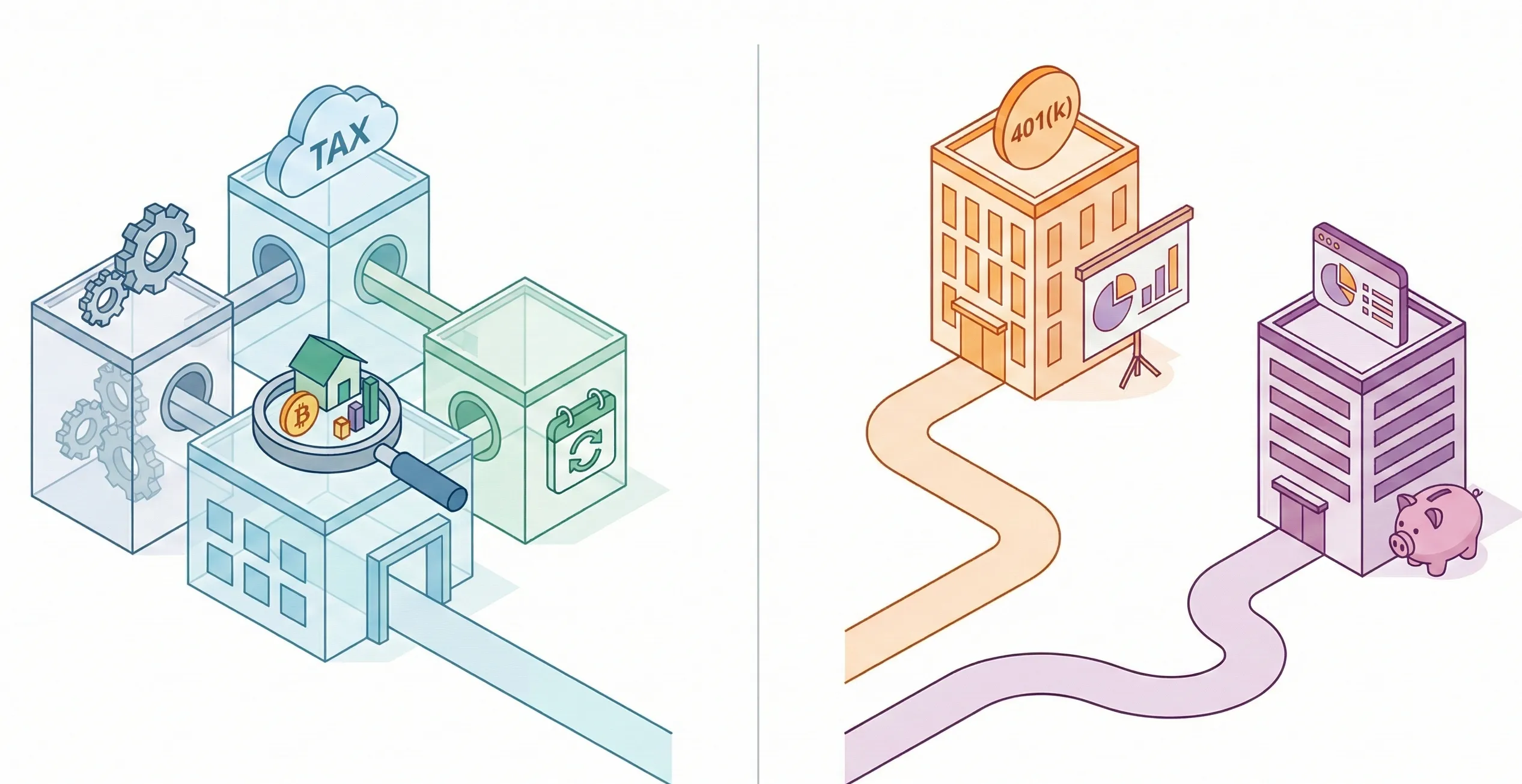PortfolioPilot: A Free WealthTrace Alternative

According to coverage of the 2025 Social Security Trustees' outlook, the program’s main trust fund is projected to be depleted around 2033, at which point scheduled benefits would be partially payable rather than fully covered. That headline fuels a common fear: retirement calculators will “solve” the income gap with neat lines and optimistic assumptions. The real issue is that retirement plans are living systems, taxes change, markets wobble, spending shifts, and tools differ in how well they reflect that messiness. This article compares PortfolioPilot and WealthTrace, focusing on account realism (taxable vs. tax-advantaged), scenario depth, planning cost, and how guidance evolves over time.
Key Takeaways
- PortfolioPilot provides free, integrated retirement planning with monthly, tax-aware recommendations.
- WealthTrace is a paid planning software focused on detailed inputs, Monte Carlo simulations, and professional-style reports for DIY users.
- Both address tax and account realism but differ in purpose: PortfolioPilot ties planning to continuous portfolio guidance, while WealthTrace focuses on planner-level control and precision.
- The distinction is less about charts—and more about whether the platform helps users maintain consistency as markets and life evolve.
What Both Platforms Offer (10 Shared Capabilities)
- Retirement projections – Model future balances and income streams under varying conditions.
- Scenario analysis – Supports multi-path or Monte Carlo-style forecasts instead of single linear assumptions.
- Account-type awareness – Considers taxable, tax-deferred, and tax-free accounts in drawdown logic.
- Inflation and market controls – Let users adjust inflation, returns, and volatility assumptions.
- Tax considerations – Factors taxes into projections, improving realism.
- Goal-based inputs – Aligns spending and saving assumptions to retirement milestones.
- Portfolio integration – Links plan results with investment or account-level data.
- Performance visualization – Charts outcomes, probabilities, and ranges of success.
- Behavioral framing – Encourages disciplined decision-making versus reaction to short-term moves.
- Stress testing – Evaluates how changes in markets or inflation impact plan sustainability.
So what? Both forecast retirement paths—but differ sharply in how those forecasts become actionable.
Free vs. Paid: The Key Divide
- PortfolioPilot
- Free for individuals: Offers retirement planning tools, tax-aware modeling, and diversification diagnostics at no cost.
- Optional flat-fee membership ($29/mo): Adds ongoing tax optimization prompts, fee analysis, and estate planning workflows.
- No AUM fees or asset custody: Users stay in control; guidance operates independently from account management.
- WealthTrace
- Paid software: Offered via subscription for individual and professional planners. With public pricing as of 2025 showing Standard at $229/year, Deluxe at $289/year, and Advisor at $1,049/year or $315/quarter
- Includes detailed controls, Monte Carlo simulations, and customizable reports.
- Best suited for those who prefer a planner-style “lab environment” and manual scenario building.
So what? PortfolioPilot gives continuous, household-level guidance for free; WealthTrace provides advanced configurability at a paid tier.
Where They Differ (and Why It Matters)
PortfolioPilot - Integrated, Dynamic Guidance
- No subscription required: Retirement planning and projections available free of charge.
- Scenario + tax awareness combined: Uses scenario modeling plus dynamic account-type differentiation.
- Full balance-sheet coverage: Includes brokerage, retirement plans, real estate, cash, crypto, and liabilities.
- Holistic ecosystem: Connects to Diversification.com for diversification scores and cross-asset risk context.
- Regulated structure: Built by Global Predictions, it is an SEC-registered investment adviser; registration does not imply skill but ensures compliance standards.
- Monthly guidance (paid tier): PortfolioPilot’s optional subscription adds ongoing tax-aware insights, fee drift checks, diversification flags, and other prompts that update as markets and accounts change.
WealthTrace - Detailed, Planner-Style Control
- Granular inputs: Let users fine-tune savings rates, spending categories, inflation paths, and goal timing.
- Monte Carlo precision: Simulates probabilities of success across randomized market paths.
- Professional-style outputs: Produces configurable charts and reports for scenario comparison.
- Tax realism: Models RMDs and account-type effects directly within projections.
- Subscription model: Requires paid access; appeals to detail-oriented, hands-on planners.
So what? WealthTrace maximizes control; PortfolioPilot emphasizes continuous, tax-aware action across your full financial life.
Which Platform Fits Most Investors?
- Choose PortfolioPilot if you want a free, ongoing, tax-aware retirement plan tied directly to your portfolio and broader financial picture—without handing over asset control or paying advisory fees.
- Choose WealthTrace if you prefer a detailed, planner-grade modeling tool where you can tweak every variable and export reports manually.
The comparison is based on publicly available information from each provider’s website as of 11/19/2025. Features, fees, and methodologies may change over time.
How optimized is your portfolio?
PortfolioPilot is used by over 40,000 individuals in the US & Canada to analyze their portfolios of over $30 billion1. Discover your portfolio score now:





